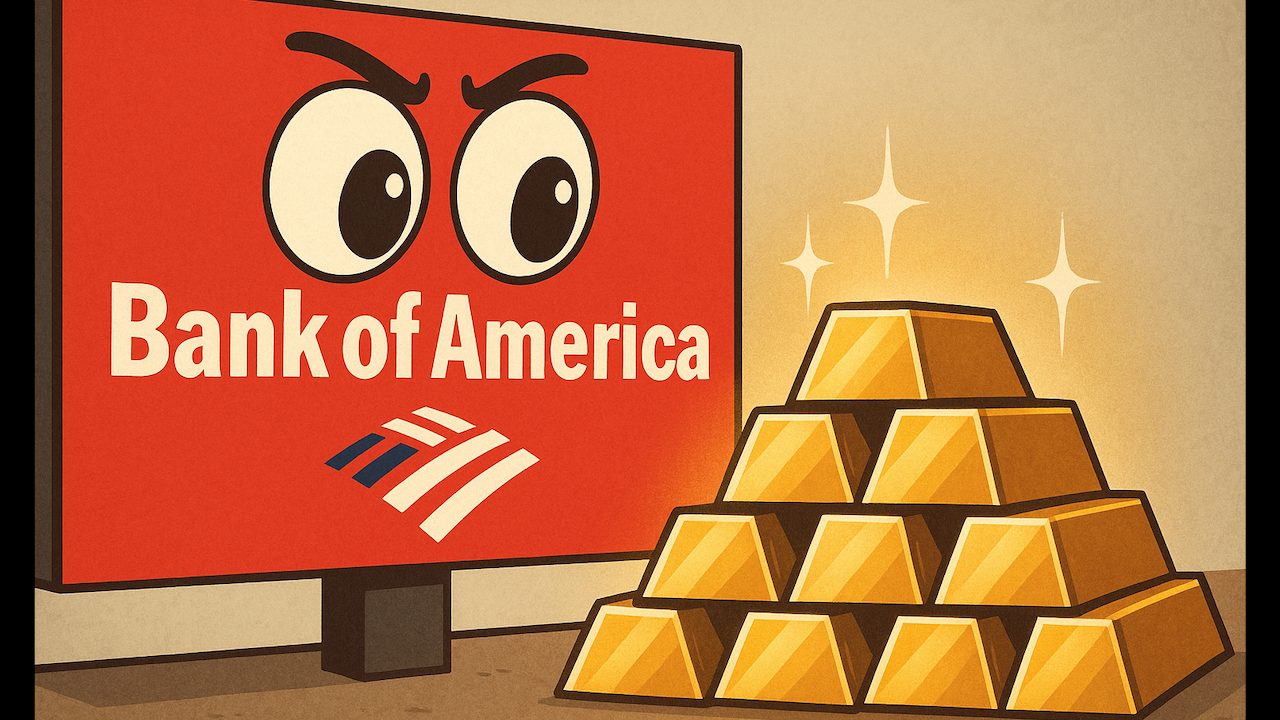(Mike Maharrey, Money Metals News Service) Bank of America is eyeballing $4,000 gold and $40 silver by the end of the year or early 2026.
Last October, the big bank projected $3,000 in 2025.
BoA analysts said trade-induced geopolitical uncertainty would continue to support the metals, with growing concern about the U.S. government’s fiscal situation possibly catalyzing the next leg up.
“So far, trade disputes have predominantly affected the economy by disrupting supply chains and weakening confidence. Incidentally, the USD has also declined alongside these developments. We still believe that gold could end up being a less risky investment than Treasuries.”
Treasury yields spiked after Moody’s downgraded the U.S. credit rating, indicating investors are becoming more wary of holding U.S. debt.
Bank of America’s head of global commodity and derivatives research, Francisco Branch, told CNBC, gold appears to be correcting right now, but the long-term outlook remains bullish.
“We think longer term, maybe into the second half or into 2026, we’ll breach $4,000 per ounce, but we’re going through a correction because some of the extreme uncertainty that we’ve witnessed in recent months seems to be fading.”
He said this consolidation phase could last “a few months.”
BoA analysts said that to drive gold higher, investment demand will need to increase, with jewelry demand stabilizing.
“To provide some context: investment would need to increase by 18% year-over-year for gold to hit $4,000/oz. That may sound like a lot, but purchases exceeded that tally in 2016 and 2020—twice in the past decade—highlighting that it’s possible.”
To their point, there is plenty of untapped investment potential in the U.S., as American investors have largely remained on the sidelines during the recent bull run while Asian investors have done the heavy lifting.
As for silver, Branch called it “one of the better investments.”
“Remember, silver is half precious, half industrial. The precious aspect of silver has been driving it higher, the industrial side has been taking a back seat, but this will eventually change. Of course, tariffs mean weaker trade conditions, and we had a pretty strong trade window between the fourth quarter of last year and the first quarter of this year, where investors were buying in anticipation of tariffs. Now we have the tariffs, so we’re going to go into a slower period which will last for a quarter or two, and eventually we will see another pickup in industrial activity.”
Industrial demand for silver set a record in 2024, driving the silver market to its fourth straight structural deficit. Industrial demand is expected to remain robust in 2025, despite some headwinds from tariff worries and supply chain disruptions.
Branch noted that silver generally tracks with gold over time, but uncertainty about the trajectory of the global economy is creating headwinds.
“If you are to model silver, the main drivers are of course the price of gold, because silver is largely a precious metal, but also what’s going on with industrial activity. Right now, industrial activity is going to be weaker, so that’s one of the reasons silver has lagged on the large upward lift in gold prices; it’s really that weaker industrial factor we’re seeing today.”
Branch said he thinks the squeeze on industrial demand will be short-lived and that it is strongly supported by growth in the green energy sector — particularly solar power.
“We still expect enormous investment in solar panels and in the electrification of everything, and we think silver plays a critical role. Remember, silver is the best electricity conductor in the world, so it’s going to play a very important role, and we think going forward, once we go back into a more stable industrial activity environment, silver will shine again.”
Mike Maharrey is a journalist and market analyst for Money Metals with over a decade of experience in precious metals. He holds a BS in accounting from the University of Kentucky and a BA in journalism from the University of South Florida.

